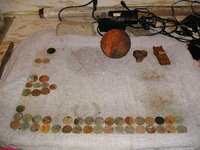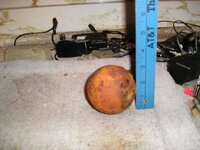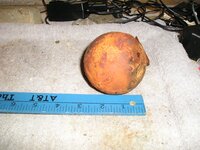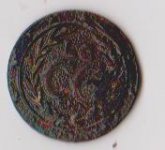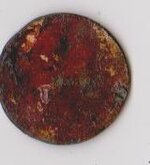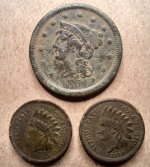junkhunter
Hero Member
- Oct 4, 2010
- 594
- 1,159
Well I got this big iron ball in creek today.May have been tossed of a bridge.I have dug musket balls,a 50 cal shell,various other live rounds,but this is different.The relic hunter in me hopes its a cannon ball.The rational person in me says its a big freaking counter weight.Can anyone confirm or deny what this thing is?
Next up got what appears to be a lapel or button that says LG CC?was gold at one time.Looks like it has back part missing.solid medal with missing pin on back.Also got a odd suspender clip,2 wheat cents,and clad
Next up got what appears to be a lapel or button that says LG CC?was gold at one time.Looks like it has back part missing.solid medal with missing pin on back.Also got a odd suspender clip,2 wheat cents,and clad
Attachments
Upvote
0


